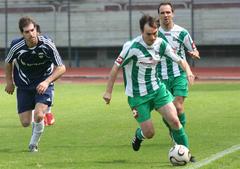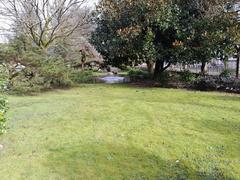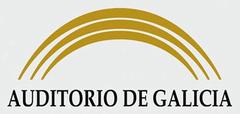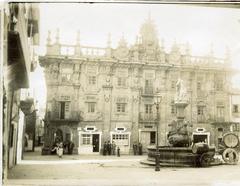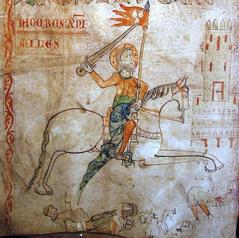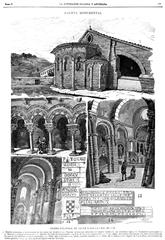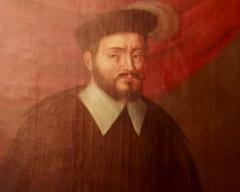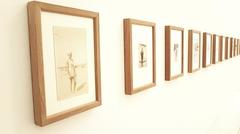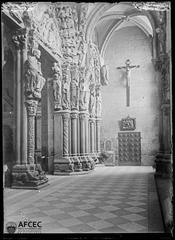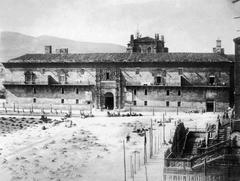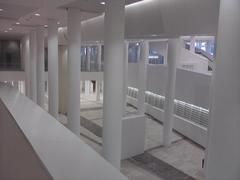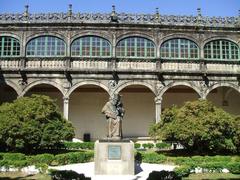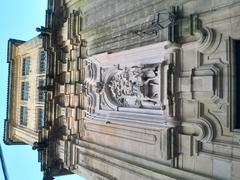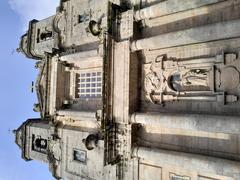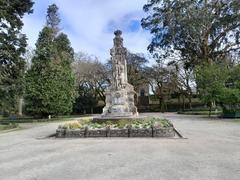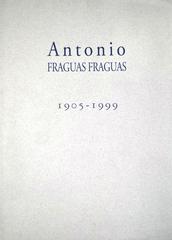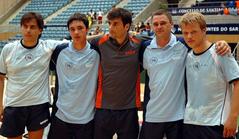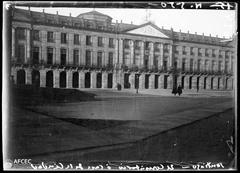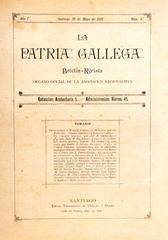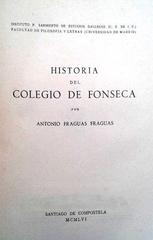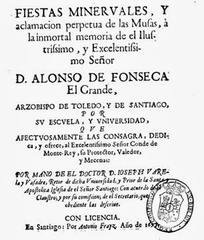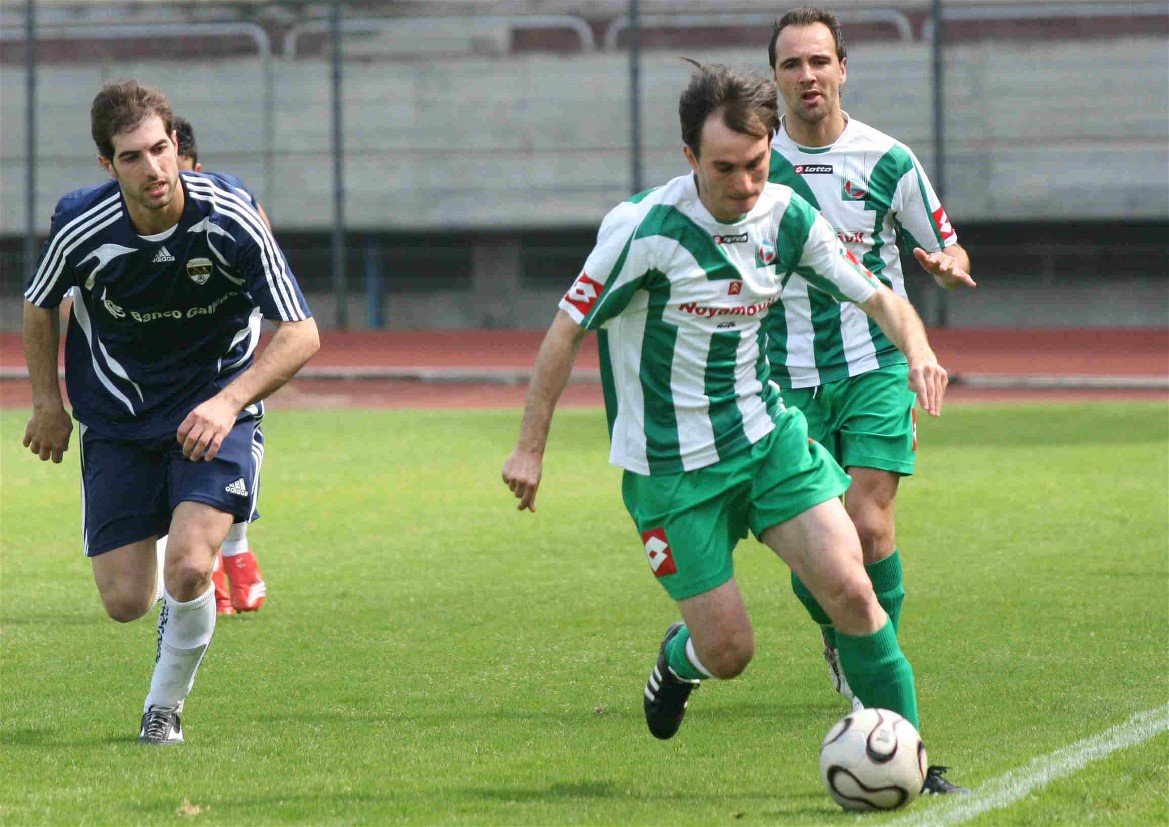
Estadio Verónica Boquete de San Lázaro: Visiting Hours, Tickets, and Comprehensive Guide
Date: 14/06/2025
Estadio Verónica Boquete de San Lázaro, formerly known as Estadio Multiusos de San Lázaro, is one of Santiago de Compostela’s premier sports and cultural landmarks. This comprehensive guide provides everything you need to know about visiting the stadium: from its rich history and architectural features to practical information about tickets, accessibility, nearby attractions, and ongoing modernization efforts.
For official updates and detailed insights, consult the SD Compostela official website, El Correo Gallego, and Absolut Santiago.
Table of Contents
- Introduction and Location
- Historical Overview
- Stadium Architecture and Facilities
- Visiting Hours and Ticketing
- Accessibility and Inclusivity
- Getting There and Travel Tips
- Guided Tours and Events
- Nearby Attractions
- Food and Drink
- Festivals and Local Culture
- Future Developments and Modernization
- Practical Tips for Visitors
- Frequently Asked Questions (FAQ)
- Visuals and Media
- Conclusion and Call to Action
- References
Introduction and Location
Estadio Verónica Boquete de San Lázaro is located in the San Lázaro district, on Santiago de Compostela’s eastern flank. Its strategic position ensures seamless access via the Autopista del Atlántico (AP-9) and proximity to the main train and bus stations. The stadium’s address is Avenida Fernando Casas Novoa, 20, 15703 Santiago de Compostela. Efficient public transport links and a substantial parking facility (approx. 2,000 spaces) make it user-friendly for both local and international visitors (Compostela.org).
Historical Overview
Inaugurated in 1993 during a phase of nationwide sports infrastructure expansion after the 1992 Barcelona Olympics, the stadium quickly became the home of SD Compostela. The club’s ascent into La Liga in the mid-1990s marked the stadium’s golden era, hosting iconic matches against teams like Real Madrid and FC Barcelona. One of the most memorable moments was Ronaldo Nazário’s legendary solo goal in the 1996–97 season.
Despite SD Compostela’s relegation in 1998, the stadium has remained a focal point for sports, cultural events, and community gatherings. In 2018, it was renamed in honor of Verónica Boquete, the celebrated Galician footballer, reflecting its evolving legacy (Absolut Santiago).
Stadium Architecture and Facilities
The stadium stands out for its distinctive oval shape, terracotta roof, and a rare 400-meter athletics track encircling the natural grass pitch. Its current operational capacity is 12,111 (expandable to 16,000 for major events) (Wikipedia). The main stand features a second tier for directors and press, while sheltered seating offers protection from Galicia’s frequent rain.
Key facilities include:
- Annexed training field (San Lázaro II)
- Social headquarters for various sports federations
- Offices for the Dirección Xeral para o Deporte da Xunta de Galicia
- Food kiosks, ample restrooms, and accessible seating
- Modern press and VIP areas (Planergo)
The athletics track, although not homologated for top-level competitions, is actively used by local clubs and open to the public during specified hours (Gl.wikipedia).
Visiting Hours and Ticketing
- Football Matches: Stadium gates open 60–90 minutes before kickoff. Tickets can be bought online via the SD Compostela official website or at stadium box offices. Prices are accessible, with discounts for children, seniors, and students.
- Athletics Track: Open to the public from 17:00 to 22:00 with prior registration at the stadium offices (Gl.wikipedia).
- Events and Concerts: Hours vary by event; check compralaentrada.com or the official SD Compostela site for details.
Accessibility and Inclusivity
The stadium is committed to universal accessibility. Features include:
- Reserved seating and ramps for visitors with reduced mobility
- Accessible restrooms
- Multilingual signage and helpful staff
- Ongoing renovations exceeding €9 million focus on improving accessibility, upgrading seating, and installing advanced lighting and a new videoboard (El Correo Gallego).
Getting There and Travel Tips
- By Public Transport: City buses connect the stadium to Santiago’s historic center and suburbs. Taxis are widely available.
- Parking: The stadium offers a large parking area suitable for private cars and buses.
- On Foot: The venue is a 15-minute walk from the main train and bus stations, with improved pedestrian access part of ongoing upgrades (Songkick).
Guided Tours and Events
While regular guided tours are not standard, group visits can be arranged via SD Compostela or the city’s sports department. These tours may include access to the stands, press areas, pitch, and changing rooms. Special events and educational programs are occasionally offered (SD Compostela).
Nearby Attractions
Enhance your visit by exploring these nearby sites:
- Museo Pedagógico de Galicia: Interactive exhibits on Galician education (Mapcarta)
- Multiusos Fontes do Sar: A major sports and events complex
- Centro Gallego de Arte Contemporáneo: Modern art gallery
- Cidade da Cultura de Galicia: Striking cultural complex overlooking Santiago
- Historic Center & Cathedral: The UNESCO World Heritage site is a short bus or taxi ride away (Spain.info)
Food and Drink
The stadium offers standard concessions on match days, but for a true taste of Galicia, visit nearby restaurants in San Lázaro and Fontiñas. Local specialties include pulpo a la gallega, empanada gallega, and fresh seafood (Caminosantiagocompostela.com).
Festivals and Local Culture
Santiago de Compostela’s vibrant festival calendar includes:
- Festivities of Saint James the Apostle (July)
- Santiago (é) Tapas: Gastronomy festival
- Ascensión Festivities: Spring parades and music (Spain.info)
Check city and club websites for event schedules.
Future Developments and Modernization
A major modernization plan is underway, with city and provincial funds supporting:
- Replacement of all seating with ergonomic, weather-resistant models
- Enhanced accessibility and sustainability: energy-efficient lighting, water-saving systems, and exploration of solar panels
- Technological upgrades: high-definition LED screens, advanced sound, strong Wi-Fi
- Expanded event capabilities and new family and community zones
The adjacent “Cidade da Raqueta” racket sports center will bolster the stadium’s role as a regional sports hub (StadiumDB.com).
Practical Tips for Visitors
- Dress for Weather: Galicia is known for rain; bring a light jacket.
- Language: Spanish and Galician are spoken; basic English is understood by stadium staff.
- Transport: Use public transport or carpool to minimize environmental impact.
- Safety: The area is safe, but standard precautions apply during large events.
- Souvenirs: Official SD Compostela merchandise available at the stadium shop.
- Sustainability: Respect local recycling and sustainability initiatives.
Frequently Asked Questions (FAQ)
What are the stadium’s visiting hours?
Primarily open on match days (gates open 60–90 minutes before kickoff). The athletics track is open from 17:00–22:00 with registration.
How do I buy tickets?
Purchase online via SD Compostela’s official website or at stadium box offices.
Is the stadium accessible for visitors with disabilities?
Yes. Designated seating, ramps, accessible restrooms, and ongoing renovations ensure inclusivity.
Are guided tours available?
Group visits can be arranged through the club or city sports department.
What nearby attractions should I visit?
Museo Pedagógico de Galicia, Multiusos Fontes do Sar, Centro Gallego de Arte Contemporáneo, Cidade da Cultura de Galicia, and the historic city center.
What local foods should I try?
Pulpo a la gallega, empanada gallega, and fresh seafood.
Visuals and Media
High-quality images and virtual tours are available on the SD Compostela website and city tourism platforms. Interactive maps help plan your route from the city center or train station.
Conclusion and Call to Action
Estadio Verónica Boquete de San Lázaro is a dynamic symbol of Santiago de Compostela’s sporting, architectural, and community life. Whether you’re attending a football match, participating in athletics, or exploring the city’s rich cultural tapestry, the stadium offers a distinctive and memorable experience.
Stay updated on events, ticketing, and renovations by visiting the SD Compostela official website or the City of Santiago’s sports department. Download the Audiala app for real-time event alerts, exclusive content, and guides to Santiago de Compostela’s best attractions.
References & Further Reading
- Absolut Santiago – Estadio Multiusos de San Lázaro: Historia y Curiosidades
- Compralaentrada – SD Compostela Ticketing
- StadiumDB – Modernization Project Details
- SD Compostela Official Website
- El Correo Gallego – Stadium Renovation News
- Planergo – Stadium Features
- Gl.wikipedia – Athletics Use and Public Access
- Caminosantiagocompostela.com – Visitors’ Guide
- Spain.info – Santiago de Compostela Guide
- Mapcarta – Museo Pedagógico de Galicia
